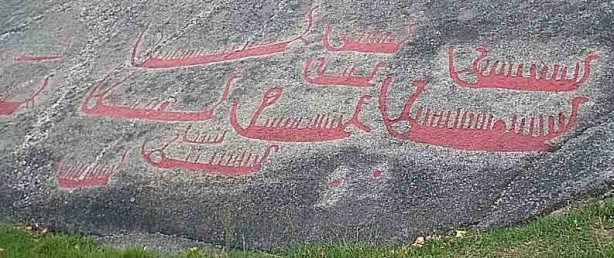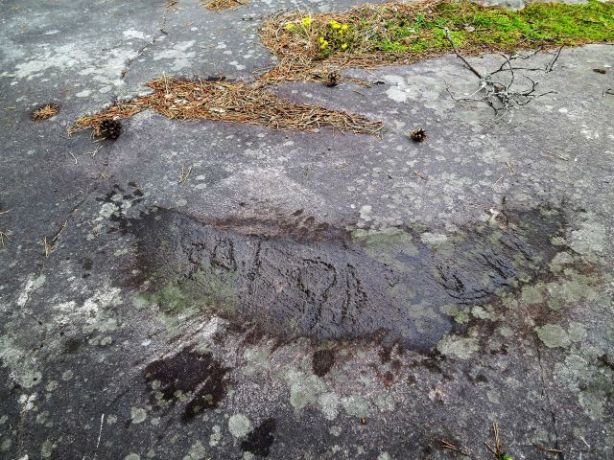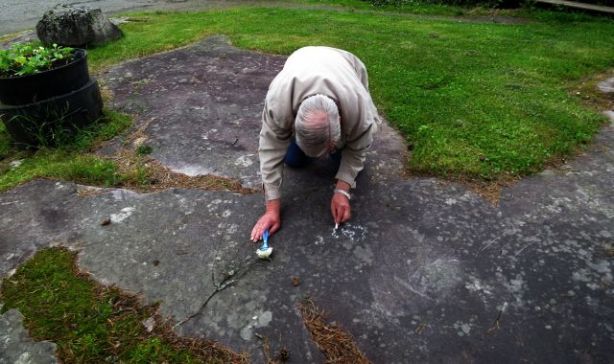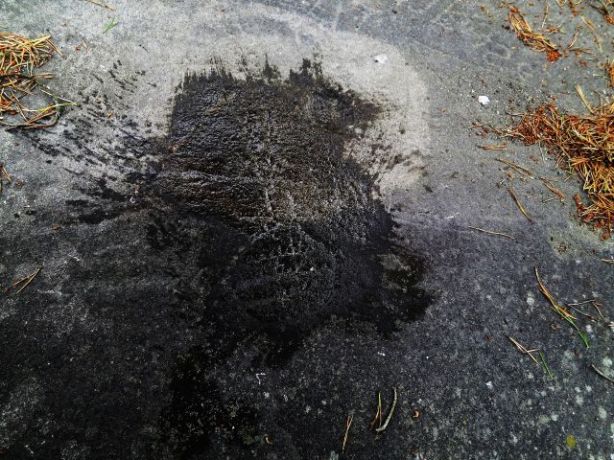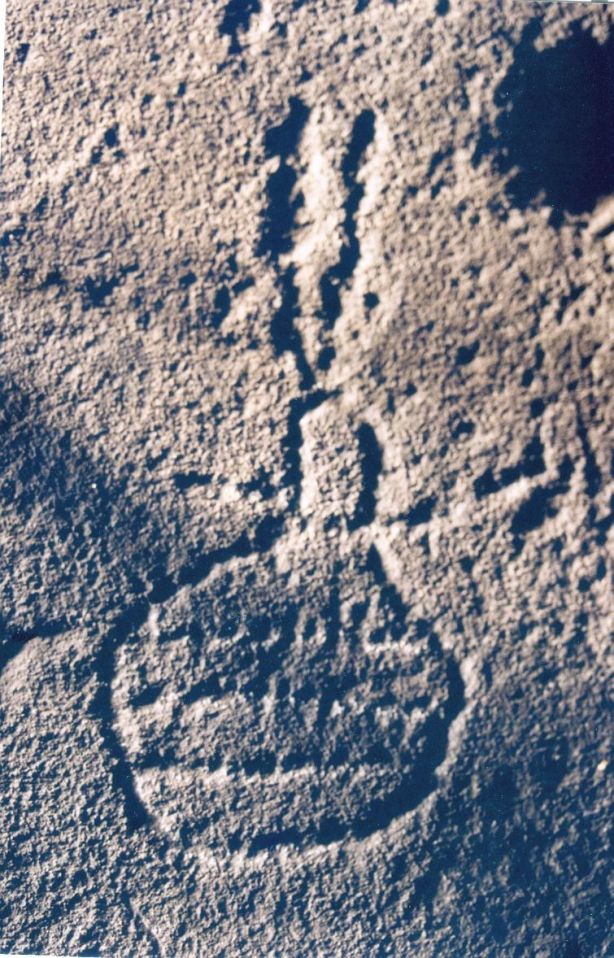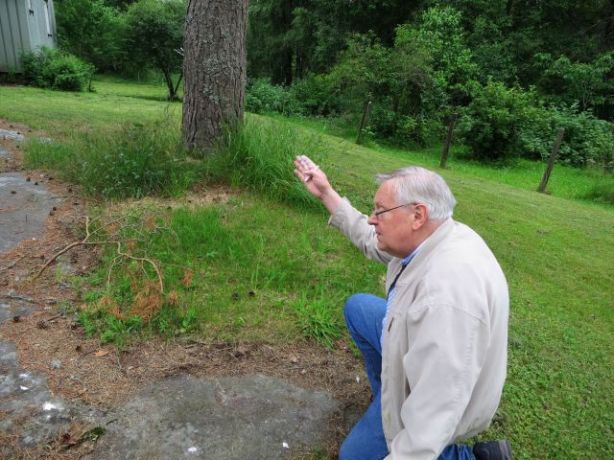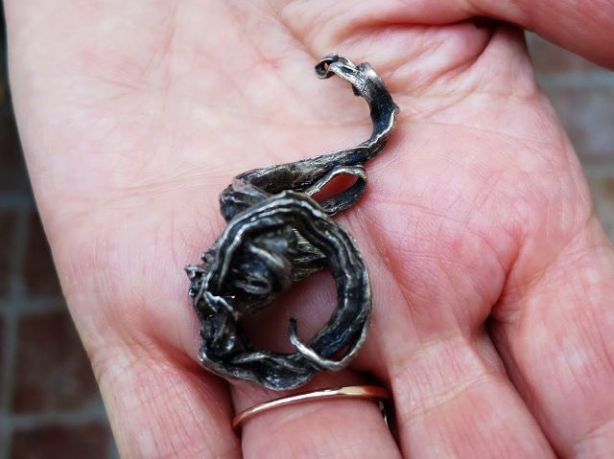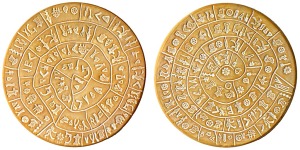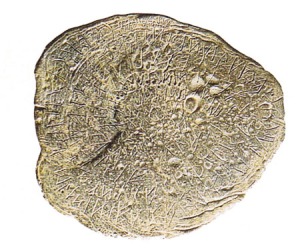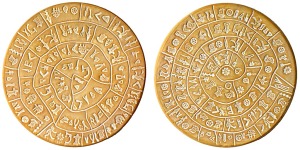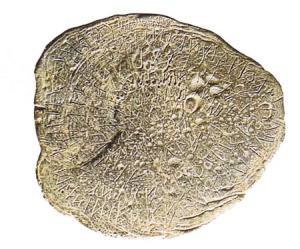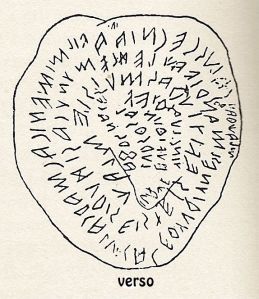Kostas – a kamaki
The Kamaki is a «character” in the recent history of Greece.
When the country opened up to tourism after the fall of the juntas in the mid-1970s, many young boys from the provinces found their way into the cities. For many, it was an opportunity to find a way out of poverty. The mature «tourist ladies» from other, more economically well-off, countries, became easy victims to the charming boys from the Islands or the rural areas.
Many of these women sought respite from their desperately frustrating marriages.
The profession is almost extinct in today’s Greece, but the young men have inherited the name. When they are out chasing girls, this is called «going kamaki!»
I read the short story in the book of the life of Liv Garas, called “a glimpse of Liv». The book gives a vivid description of a Norwegian woman’s contemplation of her meeting with Greece and her later life there. I highly recommend this book.
I suggested that she should write a sequel. She came back, however, with a counter proposal: do it yourself!
The first part is written by Liv, the second part, dealing with the Kamakis return is written by me, Sven Buchholz
,,,,,,,,,,,,,,,,,,,,,,,,,,,,,,,,,,,,,,,,,,,,,,,,,,,,,,,,,,,,,,,,,,,,,,,,,,,,,,,,,,,,,,,,,,,,,,,,,,,,,,,,,,,,,,,,,,,,,,,,,,,,,,,,,,,,,,,,,,,,,,,,,,,,,,,
Part 1, Kostas, a kamaki.
(Professional Greek seducer of women)
Written by Liv Nilsen Garas, from the book «A glimpse of Liv». (Her Norwegian name means LIFE)
………………………………………………………………
Kostas had had problems lately, and he knew it. Kari’s return to Norway had been delayed whilst the plane carrying Berit was scheduled to arrive in half an hour.
Also, last month he had planned poorly with the result that Liv had been leaving at the same time that Inger was scheduled to arrive! Maybe he was starting to get too old for this life? He had been struggling to get some money from the girls so that he could start a business for himself, but he had never succeeded in getting any of them to pay out easily!
Kostas’ thoughts started to fly back in time to the year before he went to Athens for his final year in school. He was not amongst the brightest pupils, but he managed to get through the matriculation.
He had thought of going to sea for a period, in order to save up sufficient money to go into some enterprise of his own. The town of Paros was basically ok, but he found it rather boring in the winter. At the time there was no SeniorSchool at Paros, which was why most of the young people went to Athens for the last 3 years. He had lived in a wretched little bed-sit for the 3 years it had taken him to get through school. He remembered the loneliness and the cockroaches.
It was not easy for him to make friends with people in Athens. They did not trust provincial people; they looked down on them. Many times he had tried to invite some of the girls in his class for a trip to a cinema, but they always declined. They took sly glances at him, because at this time, in the seventies, no girls would even consider going to a cinema with a boy, if engagement was not already in the air. He had learned that some of the other boys had visited prostitutes, but that thought had never appealed to Kostas.
One evening the ‘phone had rung; it had been Nikos, one of his mates from Paros. He told Kostas he had just got acquainted with some foreign girls and had invited them to a restaurant the same evening. He wanted Kostas to join him. Kostas hesitated, he thought of the expense and how he should be able to hold a conversation. He had only learned a little English at school, because in the third year they were still using the same textbook as in the first! Consequently, his command of the English language was rather limited. Nikos was more optimistic, he was sure they would get the girls to pay, and the language represented no problem for him. “Dress up a bit, buy some flowers, and we shall see!”
The evening was more than successful! The ladies paid for the food with pleasure, Nikos chatted, gesticulated cheerfully and threw out English phrases with great self-possession. When Kostas heard the words “Very poor” he realized what it meant, he could hardly believe his own ears! His father was not exactly an Onassis, but he owned some houses on Paros and a great deal of land. The girls however, swallowed the entire story with tears in their eyes. The meal, with its following discothèque, was free, and he spent the night with one of the girls. Kostas did not remember her name in the morning.
The next day Nikos phoned him again. The same procedure and the same tear jerking story about a poor childhood. This time the ladies were a bit older. They treated the boys to a more expensive restaurant, and instead of going to a cheap hotel they spent the night at one of the best hotels in Athens.
Kostas almost got homesick as the receptionist gave him the room key with a glint in his eye.
Three more years, an uncountable number of restaurant meals and hotel nights; Kostas had got this rhythm, this way of life, in his blood, under his skin. Most of the money his parents sent him for education was used for clothing and outfits. He had noticed that the girls preferred a special type of boy. He spent all the morning at the beach to get the right bronze tan, and then he slept in the afternoon in order to be in great shape in the evening. He dressed with great care. White ironed shirt and black pants, with a small jacket hanging over his shoulder. He had spent a small fortune on buying a golden cross in a chain at the second hand market. He made the same good impression on the girls every time. He never thought of himself as a Don Juan, a kamaki, the girls just gathered around him. He did not meet Nikos that often any more. He preferred to work alone.
Now and then he thought of his parents with a bit of a bad conscience. After he had made up a story about going to a technical school, they just continued to send him money. They never doubted whatever he told them. It rarely happened that he had a rendezvous with the same girl more than once. He always chose foreigners; mostly girls from Scandinavia, as they were uncomplicated, kind and straightforward, demanding little whilst they were generous with money.
In the cupboard at home he had many home knitted sweaters and jackets, and he knew that even more were on their way. Neither was he short of invitations to go abroad and visit. He also had a drawer full of hot love letters to which he never replied. Occasionally they sent him air tickets; he sold them without any problem to students waiting at the airport. The name was changed and he came home with a lot of money. He quit his bed-sit and spent his nights at various hotels. He always found someone willing to pay. He even started to save up money for a car.
It caused him some problems when he suddenly learned that his parents were coming to Athens! His mother had been taken ill and had to go to hospital for treatment. Kostas had succeeded at the last moment in borrowing an apartment for the time his parents were staying in Athens. They were impressed to find out how well Kostas was able to manage his life. He had told them that he was working for a well-known company. They accepted everything without asking questions. Kostas breathed a sigh of relief when he put his parents on the boat to Paros! He had explained to them that unfortunately, his work did not allow him to visit Paros very often. He had however promised to go to his little sister Katerina’s wedding. It would take place in September, and all of Paros was invited. Kostas was nervous just at the thought.
In In a big city, like Athens, it was no problem to remain anonymous, but on Paros everybody knew each other, so he was sure to get awkward questions. However, it was impossible for him to avoid this journey.
He had decided to take the boat from Rafina, a small port east of Athens. It was a journey of 5-6 hours with departure in the afternoon and arrival at midnight. He dressed in a suit and tie and prepared for the questions he knew would come. In his suitcase he had his wedding gift, a crystal bowl from Costa Boda. A Swedish woman had told him that this was the finest and perhaps most expensive crystal in the world. His brother Giorgos, together with Katharina and her fiancé, met him in the harbour. His parents were waiting at home. The table was covered with all his favorite dishes. Everyone looked at him full of admiration. One lie followed the other. Kostas started to feel uncomfortable. During the night he lay down, unable to sleep for many hours after he had gone to bed.
The next morning everyone was up early. Katharina was to be married in a small church a little way outside the village. After the ceremony there would be a party at Babis’ tavern. Kostas had planned to go back to Athens the next day. All the guests turn up dressed up to the nines. All rejoiced to see him and congratulated him on his magnificent job in Athens. Kostas just sat there. He wished with all of his heart that he could tell the truth. He did not feel much better when he came back to Athens. What had become of all the years and what had become of all the cute sympathetic girls he had been acquainted with? He felt hopeless and stupid.
Why had he not taken the opportunity and begun a more serious relationship with one of them? He could not bring himself to accept the idea that he was a kamaki, a professional womaniser, approaching his forties, without a past to speak of and with no future. At the airport he could see many copies of himself; most of them were younger, but there were few older. All dressed in white ironed shirts and dark pants, and everyone wore a gold cross from the second hand market on a chain around the neck.
This concludes the first part written by Liv Nilsen Garas.
NEXT : The return of Kostas, written by Sven Buchholz.
Part 2.
The homecoming of Kostas. By Sven Buchholz
Kostas lay sprawled on the bed, fully dressed, in a white shirt and dark pants. As the sunlight came farther into the room Kostas began to wake up slowly. His eyes roamed over the sad and faded wallpaper in the poor and shabby bedsit. His clothes were in disarray. The shirt was no longer white and freshly ironed. Two of the buttons were missing. The pants were stained with food, and a severe headache pressed around his forehead like a burning iron band. His stomach did not feel at all well. Kostas got up from the bed only by making a great effort. As he approached the window the sun hit him full in the face.
As he turned away, he met his own image in the mirror. He did not like what he saw. Ten more years, many more restaurant meals and hotel nights had passed. His hair was not the same raven black colour any more. Various experiments with different dyes had not been entirely successful in covering up the gray hairs. Nor had cosmetics helped him to hide the signs of aging, on the contrary, they made them even clearer. The image in the mirror reminded him more of a clown he once had seen many years ago as a child, when his grandfather had taken him to the circus on Paros, than of someone with whom the ladies would like to be seen.
Things had not gone so well for Kostas lately. The cute girls from Scandinavia, who had always had plenty of money to treat him, seemed to prefer his younger rivals. This week had been a sheer disaster. The last time Kostas had had to settle for the more elderly customers, who mostly arrived by charter flights. He often went to Piraeus to try to catch them when they came by ferry from the islands. The competition was not so hard there. His young rivals preferred the airport. The delicate Scandinavian ladies were replaced by plump middle class English women, those who sought relief from their unsuccessful and frustrating marriages. In some cases, he had also had to make do with the older Greek women! One practical problem was that his new category of customers tended to travel more together in a company. The day before he had again gone to Piraeus; he had spent the whole morning in a cafeteria that was near the bus and metro stops. Many of the English women were sitting there whilst they waited for each other or buses or trains. For each ferry that arrived at the port more and more people arrived in the cafeteria. After many cups of coffee Kostas ordered his first ouzo whilst he observed a company of English women at a table nearby. They drank one glass of beer after another and talked louder and louder. Kostas thought of the pretty girls from Scandinavia as he reflected to himself. How was it possible to see such a collection of dowdy middle-aged matrons at the same table?
Some English men were sitting around a table a little further away. They were not a prettier sight. He thought with longing of the Scandinavian girls. Why was there such a difference between people from two northern European countries? Kostas took a big gulp of his ouzo in an attempt to wash away the unpleasant impression. What could he really expect from women, in a country where even upper class ladies reminded him of horses! One of Kostas’ old school friends, who dealt with genetic research, had joked that it was due to many generations of inbreeding with horses!
Kostas looked at his watch. The boat from Mykonos was due in a few minutes. He got up and left the cafeteria. He arrived at the port about the same time as the boat. It was full of tourists. As usual the majority of them came from Mykonos; mostly “nice young men”, but luckily also some potential clients, English women. Most of these, however, were travelling in groups of six or eight. Kostas avoided these companies. He had learned that there was no money to be made there. On the contrary, they represented only problems. He remembered one time, when he had allowed himself to be persuaded to go along with such a group of seven British women; they had ended up in a bar. Suddenly all seven of them got up and ran «to catch the bus» as they said, and Kostas was left to pay the bill.
When Kostas stood there on the pier and looked for «victims» he had learned to spot all the little details. His professional eyes scanned over the different groups of potential customers. He could quickly determine if there was something that could be profitable. That day the possibilities were rather meager. It was just larger groups of women and some older couples around all quays. The boat was almost empty when Kostas discovered her. She was behind a bunch of “nice young men”. She could only be English; however she looked a better class of lady. Kostas had not noticed her immediately because she was bent over the two suitcases she was trying to carry. In a fraction of a second, Kostas found himself beside the lady, grabbed the bags and lifted them up. She was a bit surprised at first, but she recovered quickly, smiled and thanked him. Kostas was pleased with himself. Finally, he had succeeded in making contact with a better class English lady. In his many years of being a kamaki Kostas had learned to distinguish the different social and cultural classes from each other by listening to the language, English in particular. This lady spoke a language that was completely different from those he had heard in the cafeteria. It was much easier for Kostas to understand. It was amazing that it could be the same language!
While they walked together in the direction of the bus stop, Kostas had already planned the rest of the day. They approached the cafeteria, but Kostas wanted to avoid walking past it again. He began to feel sick at the thought of it. They stood on the pavement while they looked for an opportunity to cross the street. It was not so easy with all the traffic. Meanwhile, the English lady walked a little further down the road. Kostas had
no choice but to follow. He caught up with her just when they were opposite the cafeteria. Traffic was now a little quieter so it was possible to cross, but when Kostas put down one suitcase to touch her arm as a sign that they should cross, he heard a loud yell from the cafeteria. When he turned, he saw his lady running into the cafeteria where she embraced one of the members of the British group that was still sitting at the same table. Kostas felt he had to follow her in, even if he would rather have dropped both suitcases and run away. A minute later, he sat at the table with the whole company. They still drank beer; food did not seem to interest them. Kostas consumed several bowls of peanuts and crisps while he continued drinking ouzo. He did not remember much of what happened afterwards, except that he began to feel hollow while it gradually dawned on him that alcohol was a poor substitute for food. He had no idea how he had got to her room that night, the only thing he knew was that his pockets were empty. The litle money he had was all gone.
Kostas realised that he could not keep up this way of life much longer, something he had never wanted to admit, not even to himself, until his professional pride the day before had suffered total defeat when he failed to «accommodate» a customer. His old friend Nikos had gone back to Paros long ago. Kostas had heard from a mutual friend that things had gone very well for Nikos. With the money he had managed to save, and that he had from selling his car, he had opened his own shop. It was also said that he had married. Kostas did not even have money for a ticket if he had wanted to return to Paros. Furthermore, he owed more than two months’ rent. Money from Paros had stopped. He had no further contact with his parents after they had learned the truth about his real profession; that he had been a kamaki ever since he had left school. It turned out that one of his Greek «customers» had been from Paros. When she explained who he was, she blurted out the whole story to her parents. She had even taken pictures! And this was only a single event in the series of disasters that had marked his life recently …………..
Kostas did not know how long he had stood and watched his own image in the mirror. His gaze fell upon the gold cross. After he had sold the car last year, the cross was the only asset he had left. Kostas smiled. The yellowed teeth grinned back at him from the mirror. A thought flashed through his brain …… that his teeth were part of his skeleton ….. The only visible part…..
………. The last rays of the sun sank below the horizon in the MyrthosBay. Kostas glanced at the Attica coastline just as the sun disappeared below the horizon in the distance. At the same time the last 30 years of his life disappeared; the only form of life that Kostas had known since his childhood on Paros. He had sold his gold cross to get money for the ticket. Kostas cursed, and blamed himself because he had been so stupid. Seven years ago, whilst he was still getting on successfully, he had had a good relationship with Kari, a beautiful and very rich Norwegian girl. When Kostas came up with the question of financial assistance to start something on his own Kari had said yes. She added, however, the condition that they should marry. It came as quite a shock to Kostas. He hesitated and thought to himself, on the one hand he had this free life, without liability and without obligation, on the other hand, he had Kari, an immensely beautiful Norwegian girl who was also very rich. Kostas wondered why he was questioning his good fortune. Was he so entrenched in this way of life that he could not tolerate any change? He had realised, however, that he could not continue the rest of his life in this way, so he had agreed to Kari‘s proposal.
The next day she took Kostas to Norway, where he was introduced to her family. This meeting with the family passed without any problems; then Kostas went back to Athens. They had agreed that Kari would follow him the next week and join him in Athens, when they would go to Paros together, so that she could be presented to his family. When Kostas had got up, the morning when he should have met Kari at the airport, he had been lying sleepless all night. He had had great difficulty imagining himself as a husband with a family. Just the thought of children made him pause. Kostas had had a big appetite for women at that time. Four or five different partners a week had been normal. Only on Sundays had he rested. He had also acquired many expensive habits that did not quite fit into married life; trendy clothes, bars, hotels and travel. Kostas had thought that marriage was something he could postpone for several years yet. He had been certain that there would be other chances. The more this idea took root in his mind, the more Kostas developed cold feet!. Consequently, he did not meet Kari at the airport as agreed. He simply ran away from it all. He had had no idea at all of what had happened to Kari. Kostas had gone into hiding. He had never heard anything more from her again. ……….
In fact, Kostas had not planned to return to Paros. What was he going to do there now, after he had broken with his parents? All he knew was that he had to change his life radically, but he had no idea how. Meanwhile, he had gone to Piraeus every day in order to make some sort of living. It was a cold autumn day. While he was waiting on the pier he remembered the words of Nana Moskouri’s old hit, » Efige to Kalokeri”, «The summer has gone”. It really was one of those autumn days that made the words of this song come to life. There were no more tourists. Kostas had waited five hours without seeing any sign of an appropriate client. Slowly he came to realise the situation. For Kostas it was not only the summer that had passed, his life had come to a dead end. When he had been young, his time had seemed endless…but that was once upon a time…….
The boat arrived and left again. Kostas stood motionless on the pier. He thought about what kind of work he could do if he could not be a kamaki any more. He had never learned any other profession. It was hard for him to accept that there was nothing else he could do, but that was the way it was. He stared out over the sea. As he had grown up on an island, he had been – familiar with the sea since his childhood. As he stood there and stared, he felt drawn closer to the moving water’s edge. He had the feeling that the sea wanted him to come closer. He took one step and then another. It was as if he had been seized by an invisible hand. There remained only a single step….. The moment he went to take the last step, he felt another hand, this time on his shoulder and from behind, whilst he heard a voice he knew very well. This hand was very much alive and visible. It belonged to his old school friend Nikos.
A few minutes later they found themselves sitting in a tavern. Since he had not had any food for quite some time, he was grateful that Nikos invited him to eat. News from Paros, however, was not very good. Kostas’ grandfather had died that morning. He had been very old; over 95 years, but to Kostas, his grandfather was identical with the first memories from his childhood. Nikos told him about his new life. Kostas learned that he had not only a store but also a hotel and a restaurant…
It was nearing midnight when Kostas saw the lights of Paros from the deck of the ‘Ocean Mist’. This was the beginning of his new life. Kostas had offered him both work and somewhere to live.
Having spent an entire winter in England, some time earlier, Kostas had learned to speak the language quite well. He had met with an English lady at the very end of the season and followed her back to England. Jane was a sympathetic but determined mature lady. Kostas had been sent to College at the same time as she practised English with him both morning and evening. Jane was several years older than Kostas and a very educated lady from a good family. She was a teacher at a secondary school. She lived in a semi detached house with a small garden in one of the north-eastern districts of Outer London called Ilford. It was not exactly the sort of place that Kostas would have chosen to live, but Jane told him she had moved there when she got the job at a nearby school. Her old father lived in the other part of the house. In the garden was a shed where her father’s old Rolls Royce was kept. The car looked as good as it had in 1928, when it had been new, but it had not been on the road since the father’s license had expired some 20 years earlier. He was however not able to part with it. Her father always joined them for meals. Apparently he spent most of his time reading newspapers and watching the news on television. Jane‘s old father was the reincarnation of “a fine old English Gentleman”. He always greeted Kostas very politely and he always referred to what he had just read in his newspapers, followed by some regretful remarks about “the sad state of affairs in his beloved country, England.” “After the mob had taken over and ruined the entire industry, all the English had to look forward to would be a glorious past”. Jane told him later that by the word “mob”, her father meant the Trades’ Unions.
Jane was like a Mother to Kostas, she arranged everything in his life; food, clothing and education. If Kostas had not been so industrious with his education, he would not have lasted very long in England. The climate did not agree with him. He did not find it easy to get in contact with the locals. England is an island, much bigger than Paros of course, but residents considered it as the centre of the world. Everything outside was «continental» The residents had no confidence in ”continental people” In particular, the Greeks They came from a far away place and they spoke an incomprehensible language. Kostas realised that there was no future for him in England. Consequently he decided to leave before the next tourist season started. Both Jane and her father regretted Kostas’s decision. The father could however easily understand as Kostas was not all that enthusiastic, that he wanted to leave. The father said “Now that everything in my beloved England seems to be disintegrating, I only hope I will not live to see the day that the Germans would take over Rolls Royce and Jaguar. From that day England will have become the country of the living dead”
Kostas stay in England was by no means a waste of time. His knowledge of English would be very useful! After the meeting with Nikos in Athens, Kostas’ confidence began to return. Of course, he could no longer play the role of kamaki, but the new role he envisaged was more appealing to him. Although he had some grey hairs and had aged a few more years, Kostas had preserved his representative Greek appearance. Along with his knowledge of English, this would be sufficient for him to play an important role in Nikos’ new tourist centre.
Nikos met him at the harbour and took him to his new home. The apartment was not large or luxurious; it was over the kitchen of the restaurant. In comparison with lodgings in Athens, it was still like a different world. It was the chef’s apartment, but when he was not there, out of season, it was empty so Kostas could stay there until he could move into the new tourist centre. Kostas was impressed when Nikos showed him around. He had purchased the hotel and restaurant and he was in the process of a major expansion. Kostas saw drawings of the new buildings where he would get a bigger apartment before the season started. Kostas was curious. He wondered where Nikos had found all the money….
When Kostas asked about his wife, Nikos said that she was abroad at the moment.
.
The first night in the new home did not promise to be very good. For many years Kostas had had problems with sleeping. He poured himself a large glass of raki in order to help him sleep.
In his dreams he travelled back many years to the time of his childhood. He was out walking with his grandfather. Together the two of them went towards a special cake shop. There was a light fog but the sun was high in the sky. The rays of the sun penetrated the fog and made it radiate a blinding white light that struck Kostas’ face and eyes. He did not recognise the houses and streets of the city on the way to the cake shop where they always used to go. The sun came through the fog even stronger and caused the streets and house walls to glow with the same intense white light. It looked as though he had come into a part of town he did not know. All the houses were empty. Most of the windows were shattered. He could no longer see his grandfather. He tried to shout; but he could make no sound.
Kostas was afraid, he began to run and run, but without knowing where he was going. After some time he got a certain feeling of recognition, he felt as though he were in one of the streets with which he was familiar and stopped. It had to be the street where the cake shop should be but it was completely empty, there was not a living soul there. Everywhere around him he could see piles of rubbish and dilapidated houses. They were all damaged as though a war had taken place there many years ago.
Kostas suddenly recognised the entrance to the cake shop .The door was broken and the pieces lay on the pavement. The freezer and all the display cases which used to be full of cakes, pastries and ice-cream were broken and pieces were lying on the floor. At the same moment, the fog began to lift so that Kostas could see a little further down the street. Some distance away, he could sense the outlines of a human figure. Kostas went towards the figure. As he was approaching, he recognised his grandfather’s hat and coat from behind. He tried to shout, but again, no sound came out of his mouth.
His grandfather just stood there, motionless. Kostas took a few more steps and approached him. He was only one step behind his grandfather when he put his hand on his shoulders and tried to turn him around. Kostas had to exert all of his strength, but his grandfather moved only slowly. Suddenly he got to see his grandfather’s face. It was completely without any expression, was totally motionless and the same white colour as the rest of the surroundings. Just at that moment the sun came through even stronger and struck against the motionless face; his granfather’s features began to radiate the same penetrating white light that Kostas had seen before. As he stared at the face, it began to disintegrate in front of his eyes. The skin, eyes, nose, mouth, his whole face melted away like a piece of wax. The blood began to freeze in Kostas’s veins….
He suddenly woke up, almost swimming in his own sweat. He could not recognise either the bed or the room in the new apartment. He could not even understand in what world he was; could he be in the world of dreams, fantasy, or in the real one? He quickly got up from the bed, ran to the window and drew the curtains. Kostas could not believe his eyes when he looked out. The sun was high in the sky and there was no trace of fog anymore. All the buildings were clean and undamaged. The streets were full of people.
Kostas started to wake up slowly. He gradually realised that it had been a nightmare. It had been caused by all the raki of course. Kostas had learned that raki is a dangerous companion, a bad friend and an even stricter master, but what else could he do when he could not sleep? He dressed quickly and ran, without stopping, down the road to the cake shop. A few minutes later he found himself in front of the door. Although he knew that everything had been a bad dream he had to convince himself that he was once more in the real world. Everything looked normal. The owner was behind the counter and there were two customers there. The freezer and all the shelves were full of cakes, pastries, ice-cream and sweets. Kostas was relieved, even though he could not accept the truth right away.
The memory of the nightmare was still all too vivid; the image of his grandfather standing in front of him in the fog on the damaged street with his old coat and his old hat. There was nothing similar to that hat in the whole wide world. It was yellow and had a green ribbon around it resembling a tiny laurel wreath. The most remarkable things, however, were two small “ears” in the same green colour as the ribbon; that looked just like little wings! His grandfather had been given this hat as a gift from some young friends as a joke. They called him “the flyer” since, in his youth, he had shown great interest in aviation. His grandfather was very proud of that name and wore the “flying hat” for many years.
Kostas did not know how long he had been standing outside the cake shop when he heard a voice shouting out his name. When he turned, he froze as he saw his grandfather’s face. It did however not take him many seconds to realise that it was his grandfather’s obituary, with an old photograph, that by Greek tradition had been displayed on a nearby pole. The poster announced that the funeral would take place the next day. Standing next to the pole with the obituary he saw Giorgos, his brother. The expression on his brother’s face did not display kindness. Kostas realised immediately that he would forever remain unwanted, a ‘persona non grata’ in his own family. Neither was he welcome to be present at the funeral the following day.
Nikos was waiting for him when he got home. They went together to Nikos’ house to look at the plans for the new centre and to discuss Kostas‘ new job. When the phone rang Nikos went to take it in the next room and Kostas was left alone. While he waited, his eyes roamed around the entire room. They stopped at a shelf where there was a photograph that appeared to be from a wedding. The groom was Nikos. When Kostas suddenly recognised the bride, chills of ice ran through his veins, while his face changed colour and became as white as a sheet. The woman in the picture, the bride, was none other than Kari, the Norwegian girl who Kostas had left seven years ago, although he had promised to marry her! A thousand thoughts ran through his mind: When would Kari come back? Had she learned who Nikos’ new assistant was? What would she say when she learned that he was going to work for her husband? Kostas’ mind continued to go round in circles until he heard Nikos’ voice as he pointed at the photo and said, “Pretty girl, don’t you think, Kari, my Norwegian wife”? Kostas, standing there with the picture in his hand, did not know right away what he was going to reply, but after a few seconds, that for him seemed like hours, he gathered himself together and put the picture back on the shelf whilst he stammered out a few words “Ehhh …… yes,,,,,,,, very pretty ..”. Kostas, however, did understand that Nikos could hardly have known anything about an affair between himself and Kari. Neither could Kari have learned who was going to be her husband’s new assistant, since she had spent the two last months in Norway taking care of her mother, who was ill.
Kostas did not feel particularly well as he came home to the apartment that night. His nerves were as taut as violin strings. The entire first day of his new life seemed like a disaster. He could not imagine other than that Kari would not endure to be so close to him after he had so ruthlessly betrayed her, seven years ago. Nor would it be possible to keep the history of their past love affair secret from Nikos. What would he say when he learned about it? Luckily, Nikos had been so full of enthusiasm, as he showed his plans to Kostas, that he had not noticed that Kostas was totally absent minded. He had only one thought in his mind; When would Kari come home? He was not looking forward to this homecoming. He soon had the answer to his question, when he was about to leave: “I am looking forward to introducing you to Kari; she arrives home on Saturday with her mother!”
Nikos’ words had burned in his mind. His hands shook as he grabbed the bottle and poured a glass of raki, even though he had promised himself to stay away from the alcohol. As he sank down into the armchair, Kostas again lost himself in the world of dreams. Again he returned to his childhood. It was a day in spring. Everything was beautiful. Kostas went along with his grandfather towards the mountain. His grandfather was, as usual, wearing his strange “flying hat” and both of them walked along the tiny trail leading upwards towards the hills. The family owned two small houses in the mountains. In the one lived a shepherd who cared for the animals, whilst the family used the second one when they wanted to take a mountain trip. Kostas looked at his grandfather as he walked in front of him on the trail. The wind made the small wings on his hat look as though they were flapping. Kostas would not have been in the least surprised to see his grandfather starting to fly up into the sky. He always rejoiced when his grandfather allowed him to borrow his “flying hat”.
Just beside the two little houses there was a steep hill. On one side there was a little path leading to the top. The other side fell steeply down the bottom of the valley. From the top there was a magnificent view of the island. One could see the valley, the mountains, the city and, far away, the ocean. Kostas was on top of the hill and closed his eyes. When he heard his grandfather shout: “Fly Kostas ……. fly!” He felt as if he really was flying. He flew over the earth, over the mountains, the sea, and over the whole world.
The two little houses were situated in a meadow, only separated by a small hollow. Kostas and his grandfather came over to the shepherd’s house. The shepherd was out with the animals. Only a small kid stood behind a small fence in the shade of the house. When he looked over at the house on the other side Kostas caught sight of his father and mother. When they discovered him they waved; he felt as if they smiled at him. Everything was just perfect, melancholic and nostalgic…
When Kostas woke up, he felt a litle more rested, and he was not that tense anymore. The dream was, however, so vivid in his mind that he had the feeling that the whole sequence had happened in the present. The strangest thing was the image of his grandfather with the yellow hat. The hat had suddenly disappeared, many years ago; Kostas had actually been only ten years old at the time. Grandpa had loved this hat above all other things, and the whole family had looked everywhere, but it seemed to have gone forever.
Kostas made a decision. He would go to the funeral tomorrow under any circumstances, because his grandfather represented the first stage in his life, his childhood. If he did not go he knew he would come to regret it for the rest of his life.
It was a pleasant, quiet evening in the late autumn. As Kostas opened the window he could hear voices in the street below. From next door came the sound of music. Somebody was trying to play an old melody on an out-of-tune piano. People went in and out of the café and the two houses further down the street. On the pavement across the street a young couple walked with their arms around each other. They stopped every so often and embraced each other more closely. Kostas was sure that they loved each other deeply and honestly. When he looked at them, he realised that ‘love’ was, for him, just an unknown word. Although the couple was only a few yards away on the other side of the street, for Kostas, they might just as well have been on the other side of the world.
The sun was about to set. From a distance came the sound of thunder, whilst the bells of the church were ringing for the evening mass. Kostas tried to follow a series on the television, but he could not concentrate. Many thoughts roamed around in his brain. He thought of the family, his early life, Athens, all the girls he had known, especially Kari. How could he have deceived her in such a brutal way, just running away after he had promised to marry her? The more his thoughts were wandering around in his brain, the more uneasy Kostas started to feel. When his thoughts eventually concentrated on the funeral that was to take place the next day, they went into even more turmoil resulting in increasing anxiety and fear. He did however refrain from taking to the bottle.
He did not know how long he had been sitting there in front of the television screen without really seeing anything. Then his eyelids felt heavy, after a while, he was taken by fatigue and fell asleep.
Another restless night; his sleep was filled with people, places and memories. In his ears was the sound of church bells and the distant peals of thunder still sounded. Kostas again did not know in which world he was, in the world of reality, in a dream, or in a fantasy. Neither could he understand in what time he was. Maybe it was yesterday, maybe today, tomorrow, or the day after? Faces, figures and memories chased through his brain. Over all of this he could hear the church bells and peals of thunder, increasing in intensity to a roaring satanic crescendo.
Kostas heard music from somewhere far away. At first he imagined that the quiet voices of the polyphonic womans choir came from angels. When he saw the white-dressed women in the choir, on the television that he had forgotten to turn off, Kostas thought that he had gone to heaven. When he eventually came back to reality, he found that he had no power to stand up. He remained sitting in the chair listening to the music. He watched the white-dressed women. As he focussed his eyes on the television screen he had the feeling that he was being drawn towards the choir. He moved closer and closer; he did not stop even when he came to the screen, but continued through it. In a moment he arrived at the white dressed women, it seemed to him as if they were as transparent as mist .They dissolved and Kostas continued on, right through them.
The music sounded more distant. Kostas was in a misty landscape. The fog had the same blinding light that he knew from his dreams. The music from the choir had disappeared, but from a distance he heard a different music. It sounded like the mass being sung in an Orthodox church. The fog started gradually to condense into the outlines of trees, monuments and gravestones. Kostas was in a cemetery. In the distance, a funeral procession came out of the fog. As it came closer Kostas recognised his parents, brother and sister and the rest of the family. The three priests in front of the procession chanted. Six men carried the coffin. Kostas was anxious, he wanted to run away and hide behind a big tree, but his legs would not obey him so he stood, riveted, in the same place. The funeral procession was barely twenty paces from Kostas when they discovered him.
He realised that they had recognised him, but Kostas could not move. The procession stopped for a moment. All of them gazed at Kostas before they started to move again. They came towards the place where he stood. The whole beginning of the procession with the three priests became transparent, like fog, continued through Kostas and vanished. The coffin, however, bumped into him and hit Kostas on the head. He was seized by fear, and in a new attempt to escape he hit the coffin with his arm so hard that it fell to the ground and lay there whilst the rest of the group disappeared. The coffin, as it lay on the ground, was half open. Kostas took a step closer to it, then another, and another. When he got so close that he could see into the coffin, Kostas felt as though he had frozen to ice in that same moment. The face that stared at him from inside the coffin was not his grandfather’s, it was his own……..
Kostas woke up, dripping with sweat. He was only just able to walk as far as the window. He was trembling all over as he drew open the curtains. Outside, he discovered the same radiating mist with the intense white light that he knew. He quickly poured himself a large glass of raki. He had decided to quit, but it did not matter anymore. Nothing was important for Kostas anymore. He understood that his dreams had been a ‘deja vue’, an experience of something that was going to happen. Kostas had nothing to look forward to anymore. The past had caught up with what little he had left of his future. He realised that he would soon be facing the last ….the final…, the great horror.
Kostas ran through the fog. Grandfather’s voice kept singing in his ears: “To the top, Kostas, to the top.” He barely managed to follow the path upwards. As he climbed higher the fog became lighter and he could distinctly see the outlines of a man a little further ahead of him on the trail. Kostas had not recognised his grandfather immediately because this time he did not have his hat on his head, he held it in front of him, in both hands. His grandfather smiled at him as he put his hat on Kostas’ head before he disappeared into the mist. Kostas ran and ran. He reached the end of the trail and began the ascent to the top. When he arrived there, he came out of the fog and the sunlight struck him from a clear blue sky. He stared out over an endless sea of white fog. Over it all, far away, as if from outer space, he heard his Grandfather’s voice: “Fly Kostas, fly!”…… And Kostas flew, above the clouds, over the mountains, the sea, and over the whole world. He did not worry any longer; he was not afraid…… Kostas was free.
Confidential report from the Paros Police
The body of a man was found by a shepherd today, in the valley at the bottom of the mountain. It was thought likely that he had fallen from the steep rock cliff above. The strange thing was that the man was wearing a peculiar yellow hat, with wing-like green ears, that had a green ribbon around the crown resembling a tiny laurel wreath. The man had apparently pulled this hat down over his head with both hands as he fell.
Because of the somewhat mysterious circumstances of this case it is not recommended that this report be made available to the general public.
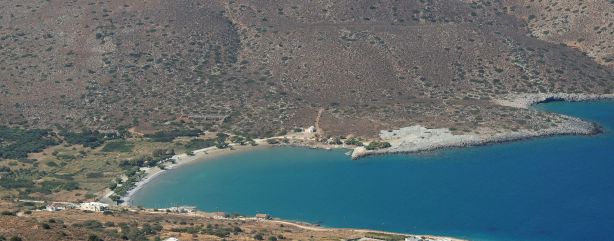
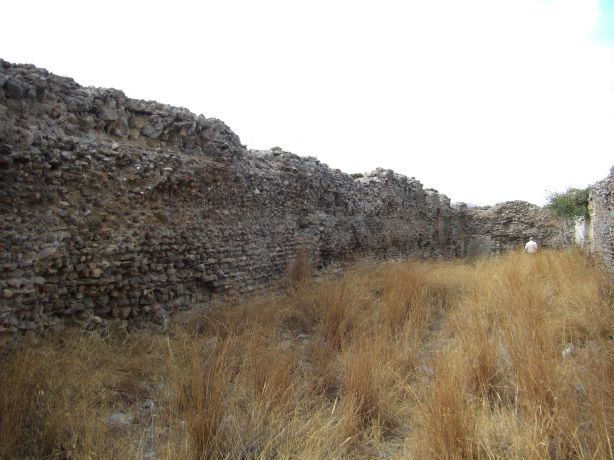
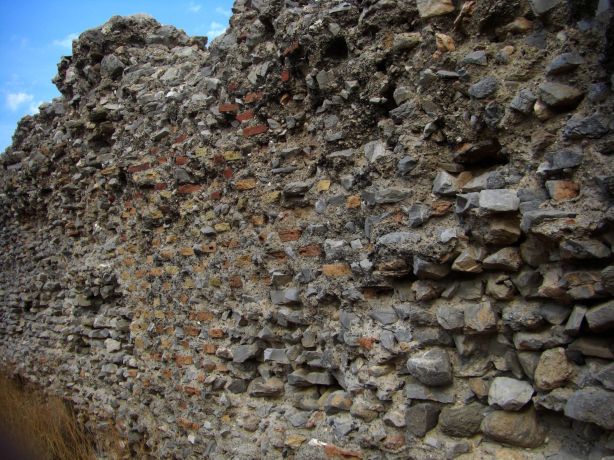

![Eikona%201[1]](https://araenil.files.wordpress.com/2012/09/eikona2011.jpg?w=614&h=397)
![Eikona%202[1]](https://araenil.files.wordpress.com/2012/09/eikona2021.jpg?w=614&h=399)
![Eikona%203[1]](https://araenil.files.wordpress.com/2012/09/eikona2031.jpg?w=614&h=380)
![Eikona%204[1]](https://araenil.files.wordpress.com/2012/09/eikona2041.jpg?w=614&h=958)
![Eikona%207[1]](https://araenil.files.wordpress.com/2012/09/eikona2071.jpg?w=614&h=419)
![Eikona%209[1]](https://araenil.files.wordpress.com/2012/09/eikona2091.jpg?w=614&h=258)


![Eikona%205[1]](https://araenil.files.wordpress.com/2012/09/eikona2051.jpg?w=614&h=431)



![Eikona%209[1]](https://araenil.files.wordpress.com/2012/09/eikona20911.jpg?w=614&h=258)


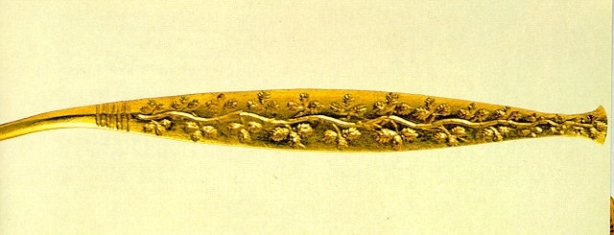

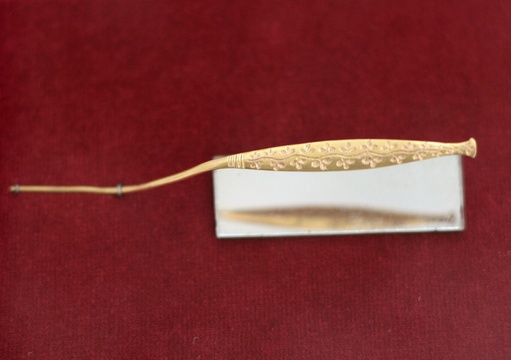
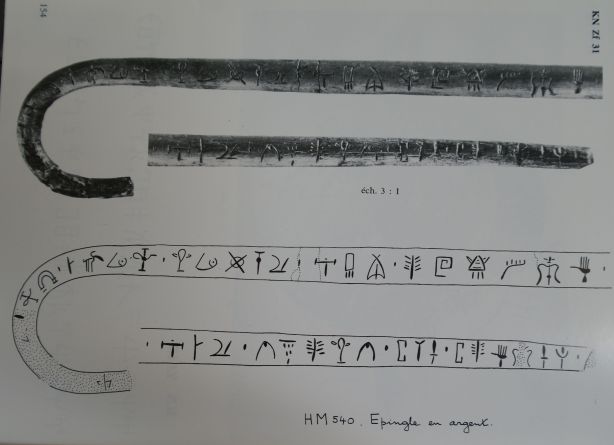


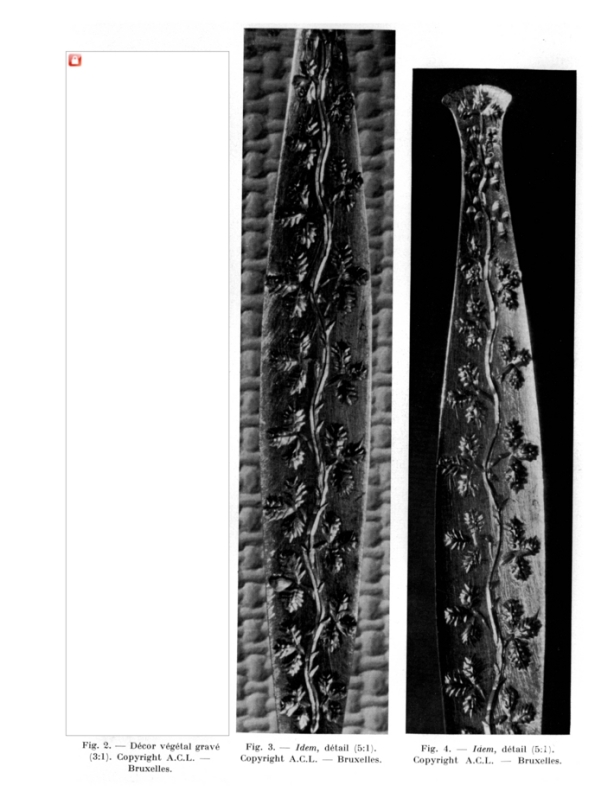




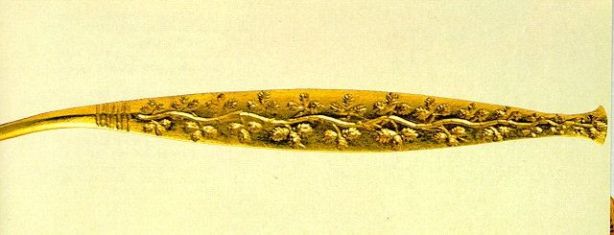



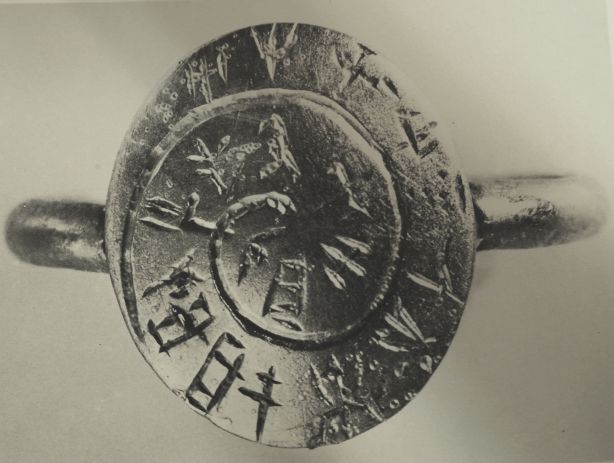

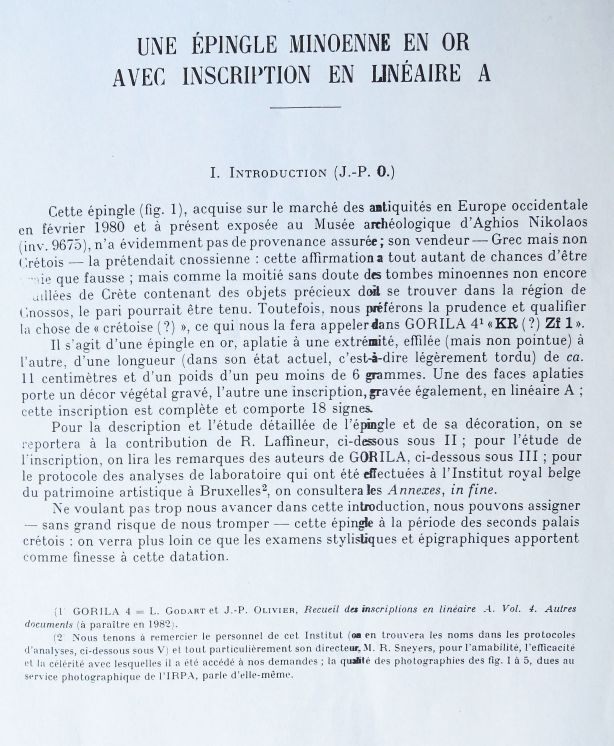
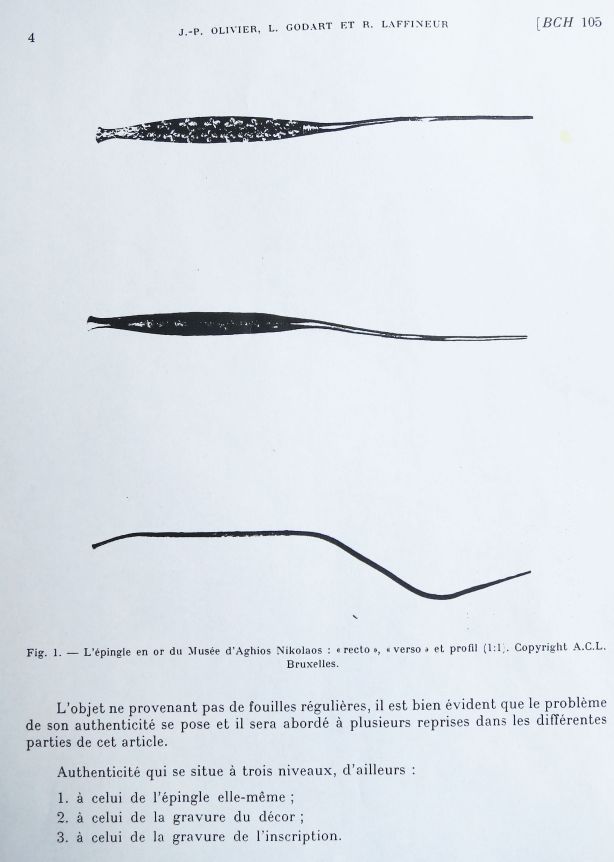
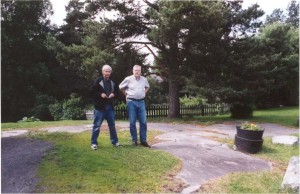


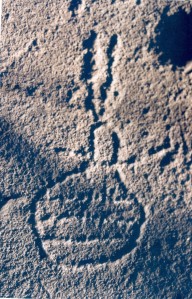
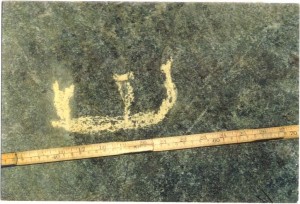


![image014[1]](https://araenil.files.wordpress.com/2011/06/image0141.jpg?w=614)


![image018[1]](https://araenil.files.wordpress.com/2011/06/image0181.jpg?w=614)
